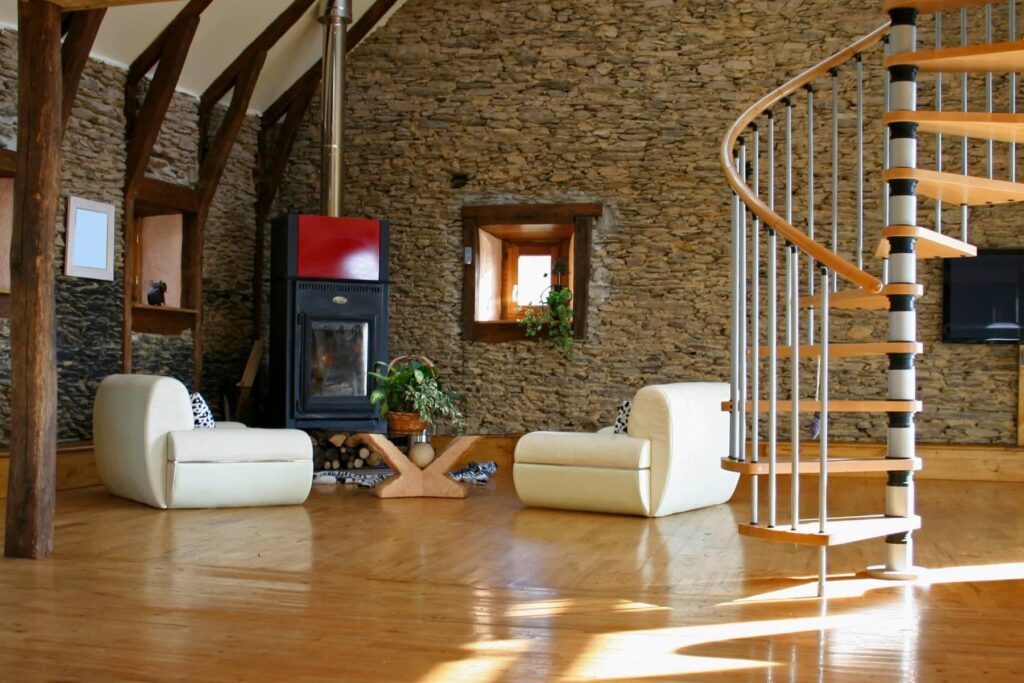What looks, from the outside, to be a ramshackle old agricultural building could in fact become a stunning new home.
Barn conversions are hugely popular in the UK and are a great way to create a unique property with incredible space.
Read on to find out more about barn conversions, why they’re so desirable and how you go about converting one.
Then we’ll show you 10 amazing barn conversions to inspire your own project…
What is a barn conversion?
A barn conversion is the process of turning an agricultural building into a habitable home or building for other commercial use.
Barn conversions became more common during the 1980s when their use as farm buildings declined and landowners looked to capitalise on their popularity as converted homes.
That popularity has continued to grow and with planning restrictions relaxed in 2014, some conversions can now be done under Permitted Development – meaning no planning permission is required.
Are barn conversions desirable?
Barn conversions are hugely desirable both with buyers and those looking to develop them to live in or sell on.
Barns make great living spaces as they’re able to combine traditional and modern design seamlessly.
They’re also generously proportioned and usually come with high ceilings and the potential for an open-plan concept – not to mention stunning views of the countryside.
Are barn conversions expensive?
The cost of converting a barn into a habitable living space can be high.
This is often due to the need to add services and utilities like gas, electricity and water to the building, as well as expensive structural improvements in many cases.
According to Checkatrade, the average cost of a barn conversion in the UK is £275,000.
Are barn conversions a good investment?
Almost all barn conversions are unique, and this makes them a very good investment.
The space they offer and their rural locations, where planning permission for a new home would be unlikely, mean they remain hugely popular with buyers and hold their value well.
Can you get a mortgage on a barn conversion?
Because a barn that hasn’t been converted is still a ‘non-habitable’ building, lenders won’t offer traditional mortgages to buy or renovate them.
In order to finance your barn conversion, you may need to consider development finance through either a bridging loan or a self-build mortgage.
Most self-build mortgages will release funds at various stages of your barn conversion and these staggered payments can help keep you on budget.
However, the number of self-build mortgages on offer are limited, so you should speak to a mortgage broker to assess your options.
A bridging loan to cover your conversion costs before you obtain a mortgage on your completed barn conversion is another option.
However, interest rates for bridging finance are usually higher.
How to convert a barn: Planning permission on barn conversions
Planning rules around the conversion of farm and agricultural buildings were changed in 2014, when a Class Q planning class was created.
If your barn conversion project falls under Class Q rules, you can use Permitted Development rights and won’t require planning permission.
However, your plans for the barn must meet a certain number of criteria to fall under Class Q and if they don’t, you would require planning permission.
Permitted Development won’t be granted if:
• Your barn is in an Area of Outstanding Natural Beauty or other designed land type
• Your barn is a listed building
• Your barn is not on agricultural land (i.e it’s in a garden or paddock)
Permission under Class Q will also consider:
• How in keeping your plans are with the barn’s surroundings
• Whether your plans maintain the character of the original building
• Any impact on wildlife or the local habitat
Even under Class Q Permitted Development, you would still need to give your planning authority prior notification of your plans due to factors surrounding transport, roads, noise and contaminated land or flooding risks.
What can I do with an old barn? 10 great, inspiring barn conversions
1. A modern barn conversion
Because barns generally have plenty of height, it’s possible to create mezzanine floors that look out over the ground floor.
This can create a unique and modern feel, as well as an incredible feeling of space.
Leaving bare brickwork exposed alongside a sleek kitchen can also be a great way to fuse modern and traditional designs.
2. Frame rural views with tall glass
Most barn conversions are located in stunning rural locations and that means incredible views, too.
To really make the most of those views, barn conversions work really well when lots of tall glass is included in the design.
3. Focus on original features
Even in the most modern of barn conversions, the inside space should pay tribute to the building’s previous life in agriculture.
That means maintaining and enhancing original features like beams, exposed brickwork or stone.
4. Use your space well
Barn conversions make great family homes due to the additional space they provide.
So, if you have that space, make sure you use it well by utilising the extra height provided by a barn for storage or displaying items like books.
5. Bring the outside in
One of the best things about converting a barn is the outside space you get from a rural setting.
By installing bi-fold doors, you can bring the outside in during the warmer months and create an incredible entertaining space.
6. Add lighting features
With high ceilings and exposed beams, it’s possible to make a feature of your barn conversion’s interior lighting.
Think about lantern-style lighting hanging in between beams as a modern take on traditional agricultural lighting.
7. Make your stairs a feature
By embracing your barn’s height to create a mezzanine floor for bedrooms, you have the opportunity to turn your stairs into a real focal point of your home.
Spiral staircases around existing internal structures can be incredibly striking features in a modern barn conversion.
8. A dream master suite
Barns provide a great opportunity to create a dream master suite.
Think about integrating your en-suite bathroom with your bedroom, or creating a large, tall window to show off your barn’s early-morning rural views.
9. Think about flow in open plan living spaces
While the huge amount of space many barn conversions provide is part of their appeal, working out how best to use that space can be daunting.
Think about the flow from one space to another in open plan concepts and consider which direction each part of your barn faces.
A north-facing kitchen, for example, may feel chilly in the winter, while a south facing living room may be too hot in the summer.
10. Feature fireplaces
How to heat your barn conversion is a huge consideration, but it’s possible to create an energy efficient option that’s also a major focal point.
Wood burners can work really well in large spaces and a 360-degree burner would be an incredible statement piece in the heart of your barn conversion.
Further reading…
If you’re thinking of renovating your current property, take a look at our guide that explains the costs you can expect.
Part of your renovation project, meanwhile, might include a new front door. Here, we’ve revealed the most popular front door images on Instagram to inspire you.
Finally, having a south-facing garden is often something that appears on buyer wishlists. In this guide, we explain the advantages and disadvantages.




